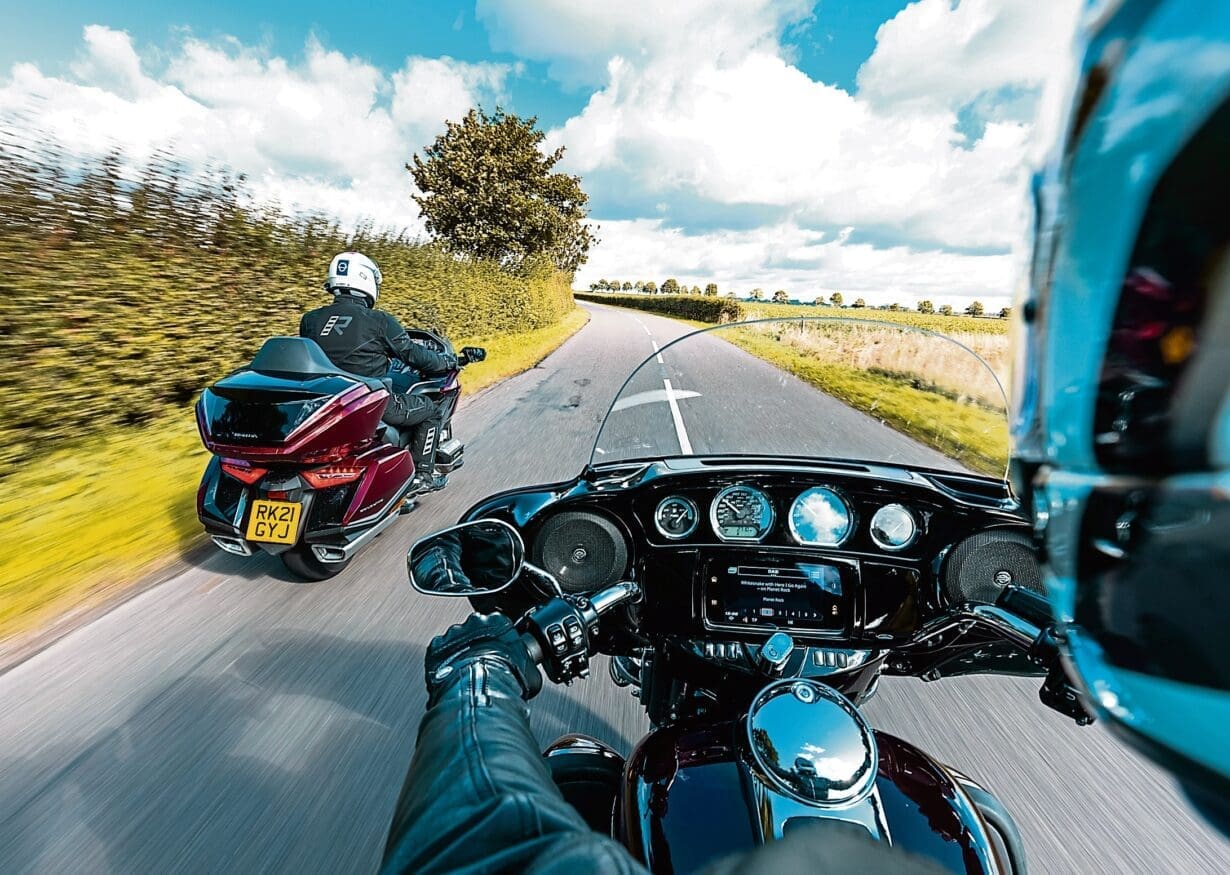Riding a motorcycle is one of the best things you can do – we all know that. But if you have been riding a little while, you also know that it’s not always easy, and advancing your riding skills is essential to keep yourself safe. The clever way to take your first step towards advanced riding is to undergo an Enhanced Rider Scheme (ERS) training course. But before you sign up, here’s a little look behind the scenes with ERS trainer Ian Burchell from Phoenix Motorcycle Training, so you know what it will entail…

The problem with advanced riding is that almost everyone has a slightly different idea about what it means, and at what point your riding qualifies as ‘advanced’. To sidestep the trap of being dragged into that argument, we are looking at how any ordinary rider can start the journey into becoming more advanced in their riding. And most people would agree that it all starts with having a plan…
We know—starting with plans and structures doesn’t sound very rock ’n’roll—but it’s the same with motorcycling as it is with anything else: you can only make it look slick and effortless if you have spent long enough honing your skills.
Enjoy everything MSL by reading the monthly magazine, Subscribe here.
We need a structured plan because it helps us prepare for and deal with hazards in a systematic way. You may have heard advanced riders talk about a couple of’ systems’: IPSGA and OSM-PSL. Both are equally dull acronyms, but they are very powerful tools for providing the rider with a system of motorcycle control to rely on.
OSM-PSL stands for Observation, Signal, Manoeuvre – Position, Speed, Look. This is a routine that you may have come across in your initial rider training. The Observation part means that you should look in your mirrors and all around you so you’re aware of the traffic situation. You should Signal clearly and in good time, and you should Manoeuvre using the PSL routine to Position your motorbike correctly and in good time, adjust your Speed as necessary, and Look for other traffic.
IPSGA is short for Information, Position, Speed, Gear, Acceleration. This is the system that police riders use to approach and negotiate hazards on the roads. It has also been adopted by most advanced riding organisations in the UK. The Information part of the system continues throughout the process with the rider taking, using, and giving information about the situation. The other parts of the system are run in succession, starting with considering your Position on the road, the Speed you are travelling at, the Gear you are using, and finally Acceleration once you have dealt with the hazard. All of these are done to put you in the right position, at the right speed, and in the right gear to best negotiate the hazard, then accelerate away from it, whatever it may be. We could talk for hours about what is involved in each stage of the system in different situations, but without going too deep into it, suffice to say that it provides a system to deal with pretty much any hazard that you may face on your bike.
Naturally, just knowing what the acronyms mean doesn’t make you an advanced rider. It takes a fair bit of riding, thinking, then riding again to appreciate what each component part of the system means in different situations, and even longer to make them a part of your riding. If you do an ERS training day, the trainer will look for correct and effective use of OSM-PSL/IPSGA for all road and traffic situations.
More experienced riders often ride with more confidence and assertiveness than those new to two wheels. Some of it comes with the miles you ride over the years, but you can also actively work towards improving your skills and knowledge, which in turn increases your confidence and helps you be more assertive in your riding. Just be careful not to mistake this for riding aggressively – that’s something that never leads to anything good.
Another area that is developed as part of becoming a better rider is hazard perception. The more you know about what might be a potential problem, and how different situations might develop, the more you know to be on the lookout for them. Something that might look like possessing no danger at all to a new rider may be a reason for a more experienced rider to change their position, speed and gear to prepare for a potential hazard. Sometimes the hazards remain just that, potential, but if they become real and acute, you need to be ready to deal with them, and know exactly how to do that.
Ian Burchell, an ERS trainer at Phoenix Motorcycle Training, has seen large numbers of riders struggle with having a structured and planned approach to riding. The main problem he has detected in many rides is “lack of forward vision, linked to a lack of planning the ride. This often shows as stopping unnecessarily at roundabouts and junctions; missing speed limit signs and other warnings.” If you recognise yourself in that description, it might be worth giving Ian a call and start working on advancing your riding skills.
Where to get the skills?
Phoenix Motorcycle Training is the UK’s largest motorcycle training organisation, with ERS courses available at several locations. To find your nearest location, visit phoenixmotorcycletraining.co.uk or call 0330 223 4000.
How to get better quickly?
Unfortunately, there are no shortcuts to becoming an advanced rider, it will take time and practice. However, you can make the process much quicker and easier by signing up to do a training day like the one-day Enhanced Rider Scheme (ERS) with a qualified and DVSA approved trainer.














